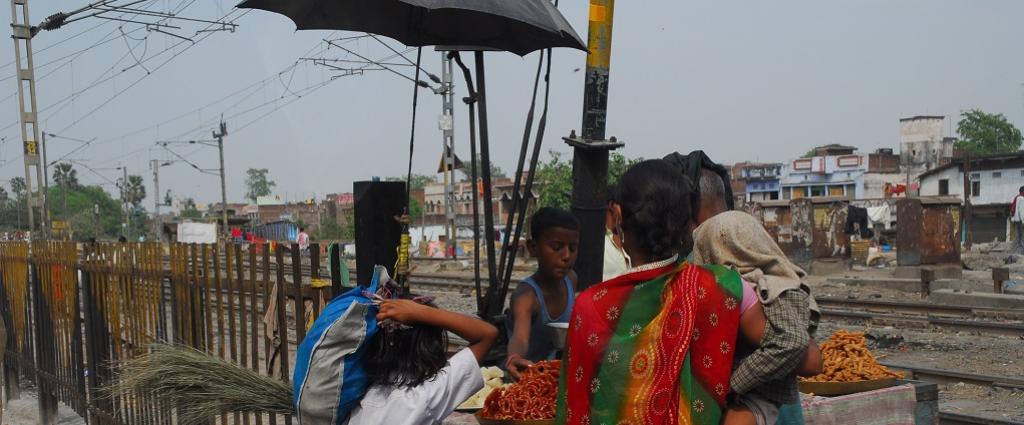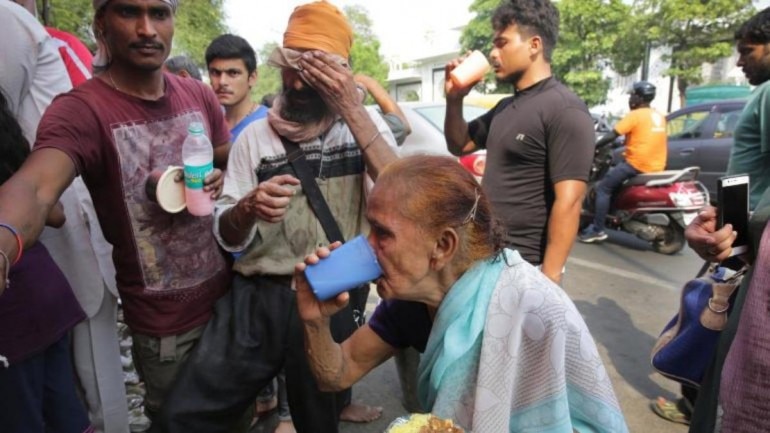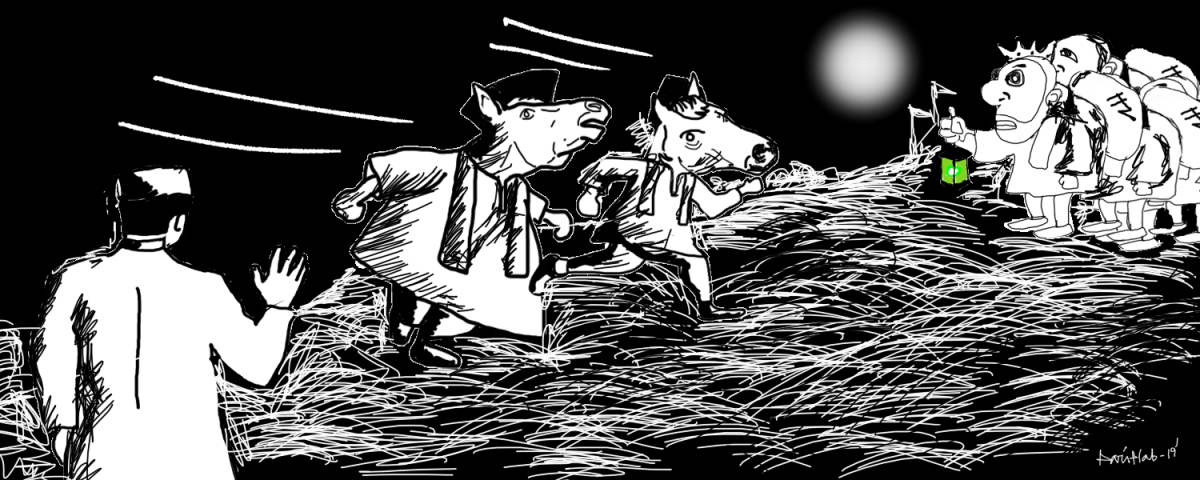Source: thewire.in
The political class made a commitment when parliament passed the
tenth schedule of the constitution, popularly known as the
anti-defection law, to maintain the integrity and stability of the party
system. Their whole-hearted support to the constitution (52nd amendment
) Bill which incorporated the tenth schedule in the constitution
signified that commitment.
Thirty-four years later, that commitment seems to hold no value. Elected representatives are very much engaged in familiar party-hopping tactics. The mass exodus of MLAs from the vanquished Congress to victorious parties shows that they have no respect for the anti-defection law.
Earlier, the ‘aaya Ram, gaya Ram‘ phenomenon had created an alarming level of political instability. Governments fell frequently as elected representatives exercises their ‘freedom of movement’ a little too literally.
Now, a new phenomenon is at play. MLAs, corporators etc. belonging to
defeated parties have started migrating in large number to winning
parties. This means parties that lose elections are all but wiped out of
legislative bodies. Top leaders from victorious parties openly
encourage representatives of defeated parties to defect.
Defection is a politically immoral act, and the anti-defection law ought to have stamped it out. If people have chosen a representative from one party, she has no moral or legal right to defect to another party during her tenure. The tenth schedule disqualifies such representatives, and their legislature membership is terminated. Nevertheless, defection continue. People defect in groups and thus defeat the law.
The latest case is of 12 MLAs from the Congress party “merging” with the Telangana Rashtra Samithi, the ruling party in Telangana. News reports suggest that groups of MLAs from the Congress in Congress-ruled states are also getting ready to move over to the BJP.
These legislators would do well to pause and take a hard look at the provisions of the anti-defection law. If they do that, they will realise that their actions will most certainly land them in serious trouble. At the moment, they happily believe that if out of 18 MLAs, 12 go over and merge with the ruling party, they will be safe. According to them, if two-thirds of the legislators merge with another party, it does not amount to defection.
Clearly, they do not fully understand the law. Para 4 of the tenth schedule makes three points:
- The original political party should merge with another party.
- As a result, not less than two-thirds of the members of the legislature party merge with that party.
- The merger becomes legally recognisable only when two-thirds of the
members of the legislature party also merge with the other party.
In other words, as per para 4 of the tenth schedule, a merger can be
legally recognised only when the original party merges with another
party, and not less than two-thirds of the members of the legislature
party agree to such a merger. So even if two-thirds of the members of
the legislature party decide to merge, there would be no merger under
para 4 if the original political party does not merge with another
party. Thus, in the absence of a merger of the original political party
with another party, the merger of the legislators has no legal validity.
Hence they will be termed defectors and held liable to be disqualified.
Legislators would do well to understand that the anti-defection law
was enacted not to facilitate their defection but to prevent it.
Lawmakers have taken care to punish individual defectors, while at the
same time protect legislators who act in tandem with their original
political party when it merges with another party.
The tenth schedule, as it was originally enacted, contained a
provision to protect legislators when an original party splits and
one-third of the legislators form another group. This was deleted later
when it was found that this provision was being abused by politicians.
An important point needs to be made here. The basic object of the
tenth schedule is to prevent defection and thereby protect the stability
of the party system as well as of established governments. When we
analyse para 3 (now deleted) and para 4, this becomes clear. Para 3
dealt with the split in the original political party and para 4 deals
with merger by the original party. In both cases, it is the original
political party which initiates the action.
Any unilateral action by legislators, singly or in a group, is always treated as defection. Only if the original party takes the plunge do legislators get protection. Thus, the law says legislators should not abandon their party once they are elected on its ticket unless the party itself decides to merge with another party.
The recent spate of defections in various state legislatures recently shows that defector legislators are under the impression that it is enough to mobilise two-thirds of the members of the legislature party and merge with the ruling party. In this context, the Supreme Court judgment in Rajendra Singh Rana vs Swami Prasad Maurya (2007) is very instructive. Although this case dealt with the split in the legislature party, its ratio applies to a case of merger as well. The court says, “Those who have left the party will have prima facie to show by relevant materials that there has been a split in the original party.”
Similarly, in Jagjit Singh vs State of Haryana as well, the Supreme Court said that the split in the original party is a precondition for recognising a split in the legislature party. The Rajender Singh Rana case was decided by a five-judge constitution bench, which in fact upheld the proposition laid down in Jagjit Singh. The ratio of these decisions apply to a case of merger also.
What happened in Telangana
In Telangana, 12 of the 18 Congress MLAs have merged with the ruling
party in the state, the TRS. This merger was endorsed by the chief
minister and accepted by the speaker. The defecting Congress MLAs thus
instantly became TRS members.
Two points need to be made in this context.
One, para 4 of the tenth schedule says that the original political
party should merge with another party first. This would mean that the
Congress party should merge with the TRS before these 12 MLAs can merge
with that party. But there is no evidence that the Congress party has
merged with the TRS. Therefore, there is no legally recognisable merger
in Telangana.
Further, the decision to merge with the TRS needs to be taken by the
All India Congress Committee and not the Telangana Pradesh Congress
Committee. The Jagjit Singh judgment says, “In case a member is
put up by a national party it is a split in that party which is
relevant and not a split in that party at the state level.”
Second, media reports say that the speaker has accepted the merger and recognised the defecting MLAs as TRS members.
Under the tenth schedule, the speaker gets jurisdiction to act only
when a petition is presented to him under para 6 of the schedule. No
such petition seems to have been filed by the Congress party. So the act
of the speaker accepting the merger is without jurisdiction, and hence
does not count.
The Rajendra Singh Rana judgment says, “Under the
10th schedule the speaker is not expected to simply entertain a claim
under para 3 and 4 of the schedule without first acquiring jurisdiction
to decide a question of disqualification in terms of the para 6 of the
schedule. …The power under the 10th schedule to do so accrues to him
only when he is called upon to decide the question referred to him in
para 6 of that schedule.”
On the basis of this analysis, it becomes clear that the merger of
the 12 Congress MLAs in Telangana is not recognised by law. The
speaker’s decision to accept the merger seems to be an act without
jurisdiction, and is therefore not sustainable. The result is that these
12 MLAs are liable to be disqualified under para 2 (1)(a) of the
tenth schedule, on the grounds that they have voluntarily given up
membership of the Congress party.


